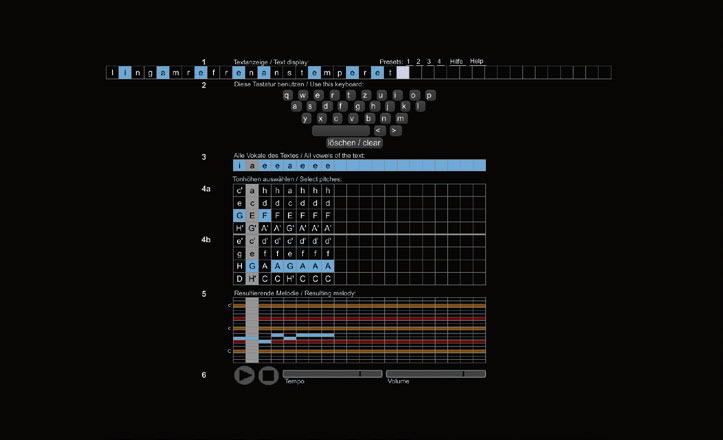Playback device, headphones or speaker
Music table – Guido’s Code #A
The installations Guido’s Code #A and #B refer to what is probably the oldest music algorithm in European history, formulated almost exactly a thousand years ago by the Benedictine monk Guido of Arezzo in his famous work Micrologus de disciplina artis musicae.
In the installation Guido’s Code #B, visitors can experience for themselves how Guido of Arezzo’s algorithm works. They enter a text into the computer, which is converted into a melody according to Guido of Arezzo’s rules and then played back. The algorithm allows the user certain freedoms and choices. This encourages the visitors to form their own assessment as to whether the melody is a successful outcome. This exploration of the melody was an important aspect for Guido of Arezzo, who wanted to provide the readers of his book with a tool that enabled them to learn how to compose themselves.
In addition to the algorithm used here, Guido of Arezzo introduced a number of groundbreaking innovations to the practice of music, such as the clef. His innovations were aimed at making this exclusive knowledge, restricted to monks, accessible to a wider range of people. In this sense, Guido of Arezzo was an early pioneer of today’s “open source” and “open access” movements.
